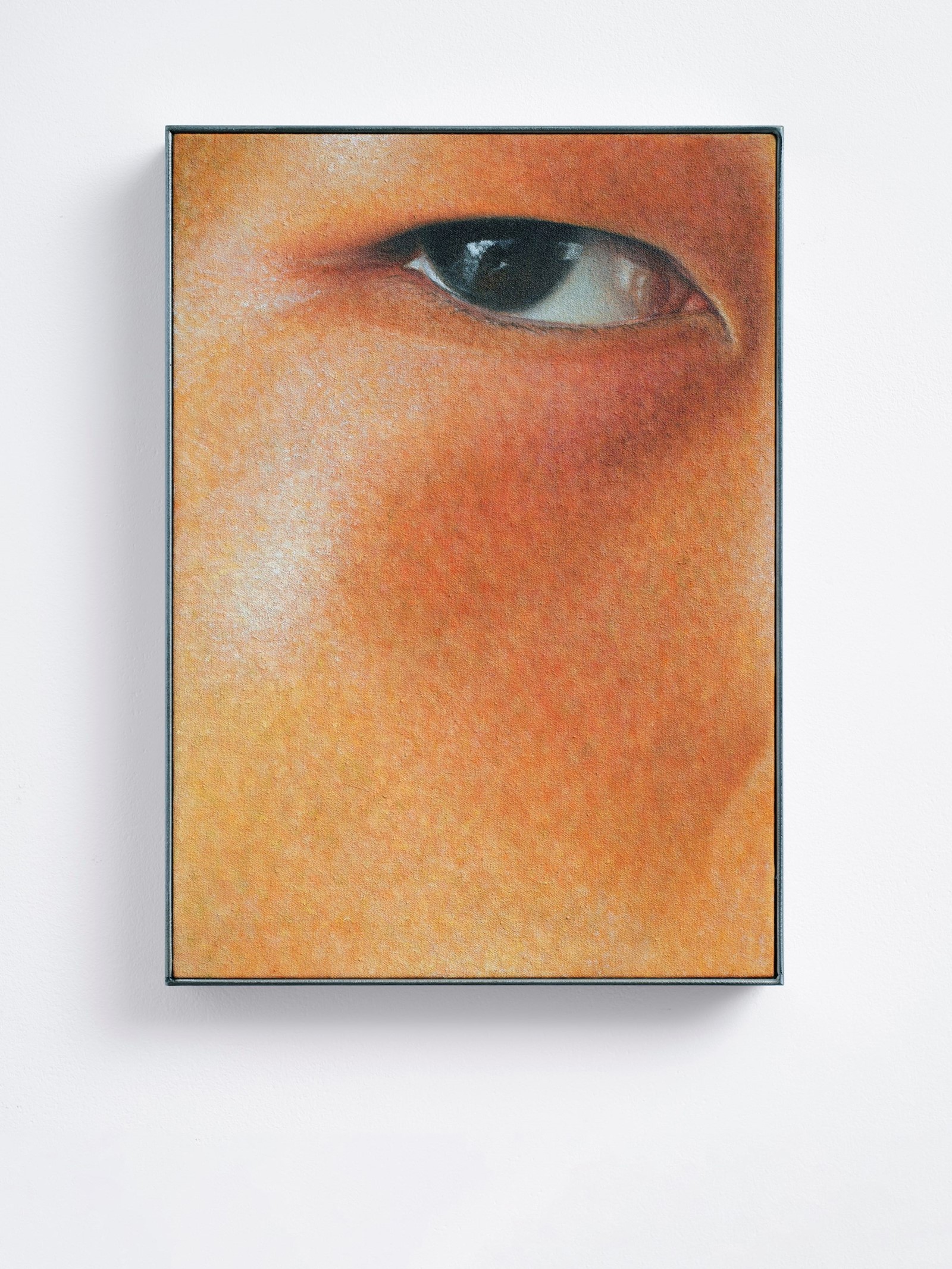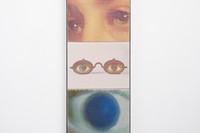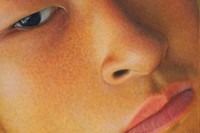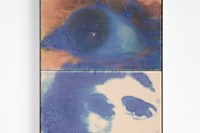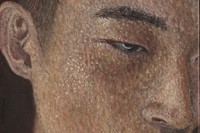Upon entering The Seer, The Seen, you may recognise the individual depicted in several paintings. After all, artist Sang Woo Kim is a familiar face, having had a decade-long successful career as a model. But for his debut solo exhibition in London, which spans both Herald St galleries, Kim is reclaiming his widely editorialised image and sense of self, not only in the eyes of the fashion industry but from the gaze of the West, for which he has spent his entire life being othered and fetishised.
It is not the first time his work has been exhibited in his home country. Earlier this year, Kim was invited to participate in a group show Present Tense at Hauser & Wirth Somerset, which spotlighted Britain’s emerging contemporary artists and showcased Kim as an artist reckoning with his identity and image in the context of British society.
For this exhibition, Kim continues to slowly reveal more of himself. He uses eyes as a “sort of protest,” explaining they are at the core of the discrimination he experienced. From his tightly cropped and gestural self-portraits to pigment transfers of found imagery, each work gazes not only at each other but at the viewer too, inviting them to “confront their own experience” and therefore question their own subjectification in an exchange between the observer and the observed.
Below, AnOther spoke with Sang Woo Kim about The Seer, The Seen.
Jodie Hill: When did you start painting self-portraits?
Sang Woo Kim: I started painting myself a year and a half ago. Before then, I was making work that was questioning my identity and the role of the artist, but in ways that avoided aspects of who I am and my life experiences. Growing up in Western society, my experiences as a Korean man were so negative. Only now I have finally come to terms with this, reclaiming agency over racialisation under the Western gaze, something further complicated by my experience as a model. I still have a resentment towards modelling and I think it comes down to the fact that I model for the Western gaze. A white person decided that I would fit their beauty standard and so I became a fetishisation of myself, so ultimately it’s still about race.

JH: So there are binaries which exist within the exhibition; the inclusivity from modelling and the exclusion from racism.
SW: You could say so, however this inclusivity is excluding, in my case. It’s funny, I’ve come to this exhibition in such a roundabout way. The irony is that, before, I was always trying to avoid being seen as a model and over intellectualise my practice, desperately trying to be seen as “an artist” ... only to realise I was overcompensating and not being genuine to who I am.
JH: How do you think the work relates to other images of yourself in the world which you can’t control?
SW: I’m not trying to compare the self-portraits to these images of myself. I’m not trying to glorify myself in these portraits either. Other images of myself are completely lost on me because they are misrepresentative and as a consequence, society has reduced me to a mere physical entity. Sure, physically, they are me, but I’m dressed, art directed and staged in a certain light to sell clothes. I’m curious how those who know me as a model would see this show in comparison to someone that doesn’t.
JH: Do you intentionally paint tight crops of your face to remove any recognition from the audience?
SW: Maybe. Perhaps I’m still hiding. I don’t want to reveal my whole self just yet. I focus on my eyes as some sort of protest, the locus of my discrimination growing up, so the crops happen naturally. People still recognise my work through my image. They might not know who I am, but they know my face.
“I’m inviting the viewer to confront their own experience of being observed and the vulnerability that comes with it, which is something I’ve carried my whole life” – Sang Woo Kim
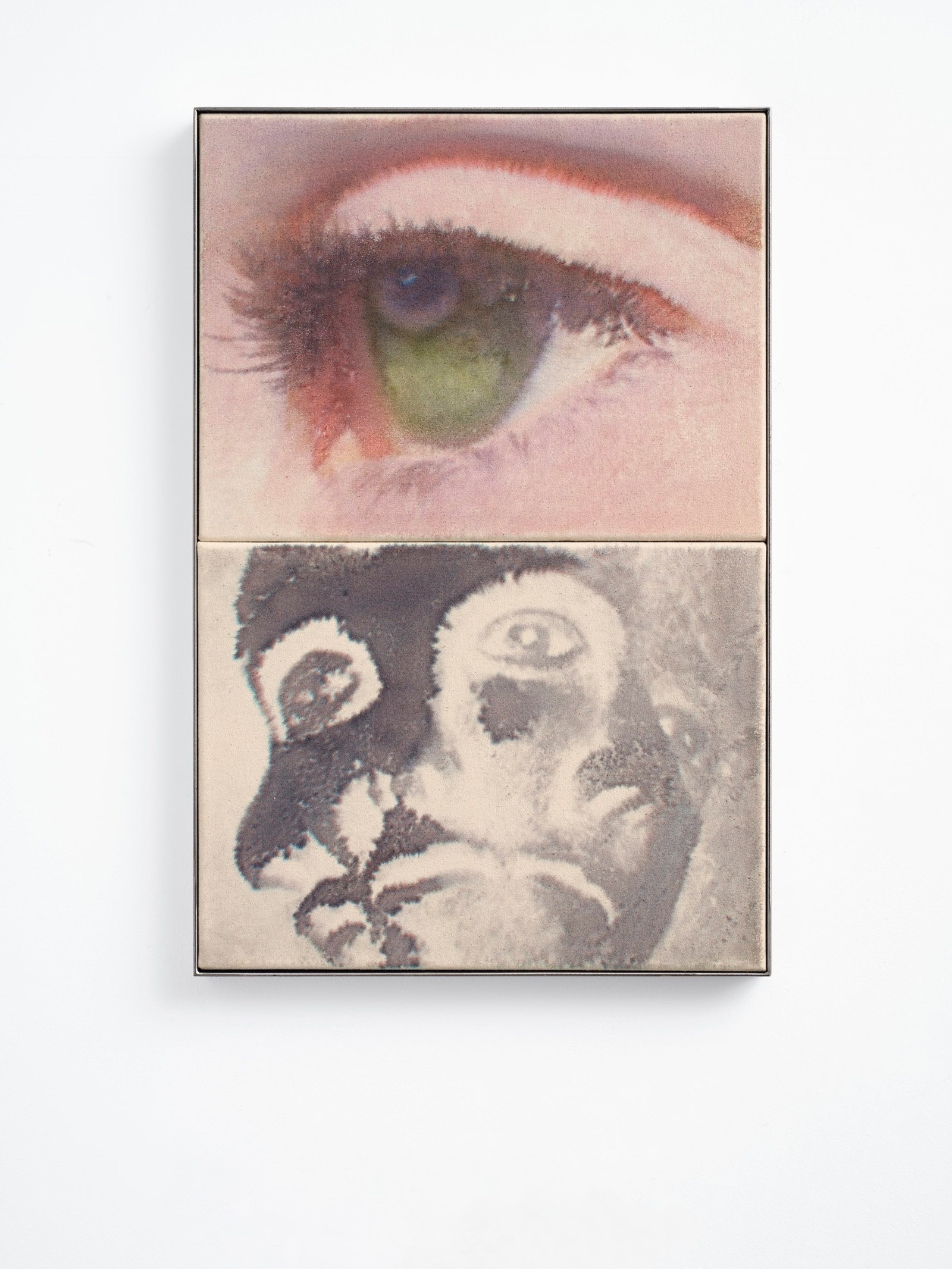
JH: In a way, you are reclaiming your image. How do the pigment transfer works speak to the rest of the exhibition?
SW: While I was at Goldsmiths, I fell in love with [Robert] Rauschenberg’s work, specifically his collages using found images where the result was very painterly. I am fascinated by painting as a whole so I have always been experimenting with different ways of painting and how you can create a photograph which looks like a painting. The subject matter in the pigment transfers focuses on eyes and the gaze. Whether seen as analogies or metaphors, the audience can read into them as they wish, but they are looking at you.
JH: The title of your exhibition is The Seer, The Seen. Do you want there to be a dialogue in the room between the audience, your self-portraits and the pigment transfers?
SW: Definitely. The title encapsulates the relationship between the two types of works and questions the viewer to be able to find their own relationship within it all. One doesn’t exist without the other. I’m inviting the viewer to confront their own experience of being observed and the vulnerability that comes with it, which is something I’ve carried my whole life. The Seer, The Seen could be read as me, the artist and the viewer, but it could be the other way around as well. Who is the observer and who is being observed?
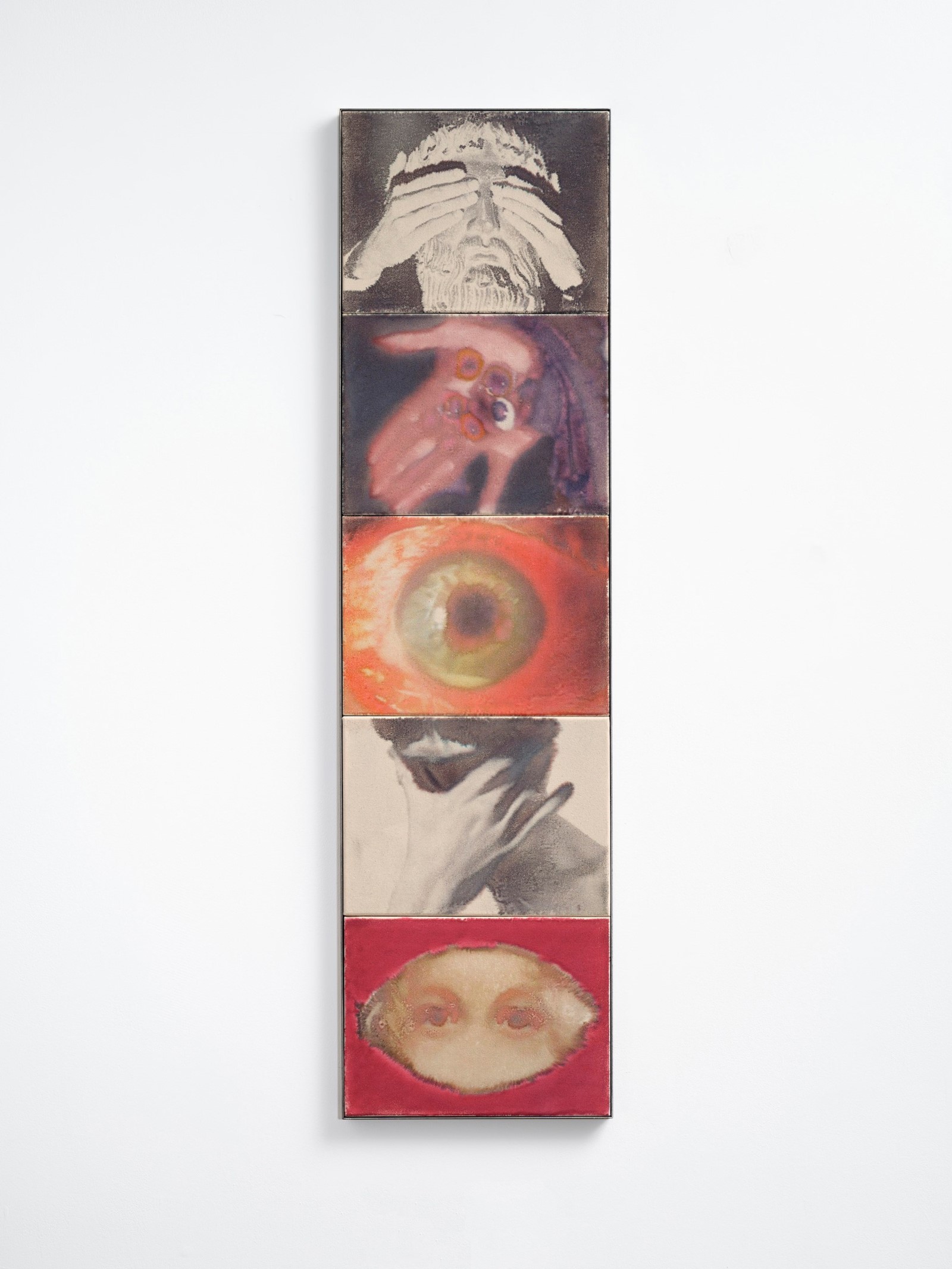
JH: As a British-Korean artist, how does it feel to have your debut solo exhibition in London?
SW: I don’t feel like I was being genuine with myself prior to making this body of work because I was skirting around, trying to avoid the core of my discomfort. In terms of showing it in London, I’m fascinated by how different audiences will experience it; especially those who have felt ‘othered’ like myself. I just want to shed light on what it’s like living on the outside and inside simultaneously, searching to understand myself and the world around me more deeply.
The Seer, The Seen by Sang Woo Kim is on show at both Herald St locations in London until 18 December 2024 and 1 February 2025.
